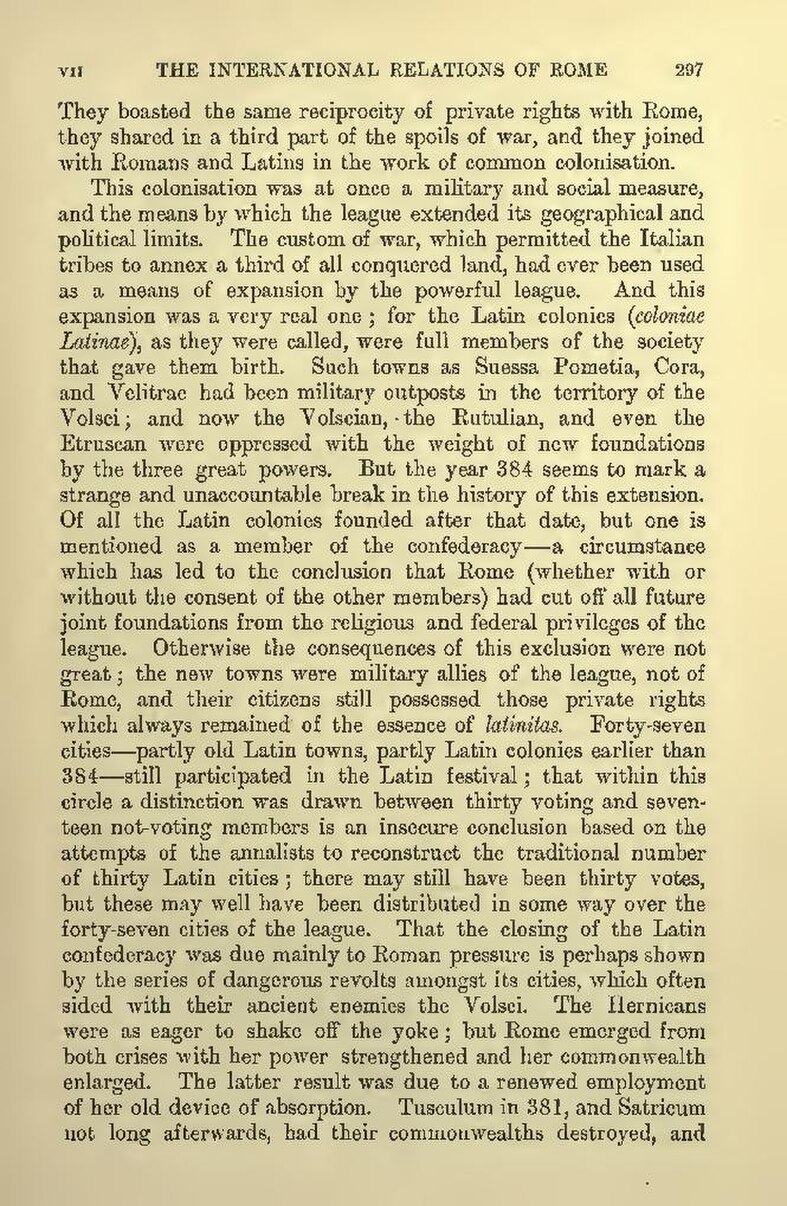They boasted the same reciprocity of private rights with Rome, they shared in a third part of the spoils of war, and they joined with Romans and Latins in the work of common colonisation.
This colonisation was at once a military and social measure, and the means by which the league extended its geographical and political limits. The custom of war, which permitted the Italian tribes to annex a third of all conquered land, had ever been used as a means of expansion by the powerful league. And this expansion was a very real one; for the Latin colonies (coloniae Latinae), as they were called, were full members of the society that gave them birth. Such towns as Suessa Pometia, Cora, and Velitrae had been military outposts in the territory of the Volsci; and now the Volscian, the Rutulian, and even the Etruscan were oppressed with the weight of new foundations by the three great powers. But the year 384 seems to mark a strange and unaccountable break in the history of this extension. Of all the Latin colonies founded after that date, but one is mentioned as a member of the confederacy—a circumstance which has led to the conclusion that Rome (whether with or without the consent of the other members) had cut off all future joint foundations from the religious and federal privileges of the league. Otherwise the consequences of this exclusion were not great; the new towns were military allies of the league, not of Rome, and their citizens still possessed those private rights which always remained of the essence of latinitas. Forty-seven cities—partly old Latin towns, partly Latin colonies earlier than 384—still participated in the Latin festival; that within this circle a distinction was drawn between thirty voting and seventeen not-voting members is an insecure conclusion based on the attempts of the annalists to reconstruct the traditional number of thirty Latin cities; there may still have been thirty votes, but these may well have been distributed in some way over the forty-seven cities of the league. That the closing of the Latin confederacy was due mainly to Roman pressure is perhaps shown by the series of dangerous revolts amongst its cities, which often sided with their ancient enemies the Volsci. The Hernicans were as eager to shake off the yoke; but Rome emerged from both crises with her power strengthened and her commonwealth enlarged. The latter result was due to a renewed employment of her old device of absorption. Tusculum in 381, and Satricum not long afterwards, had their commonwealths destroyed, and
